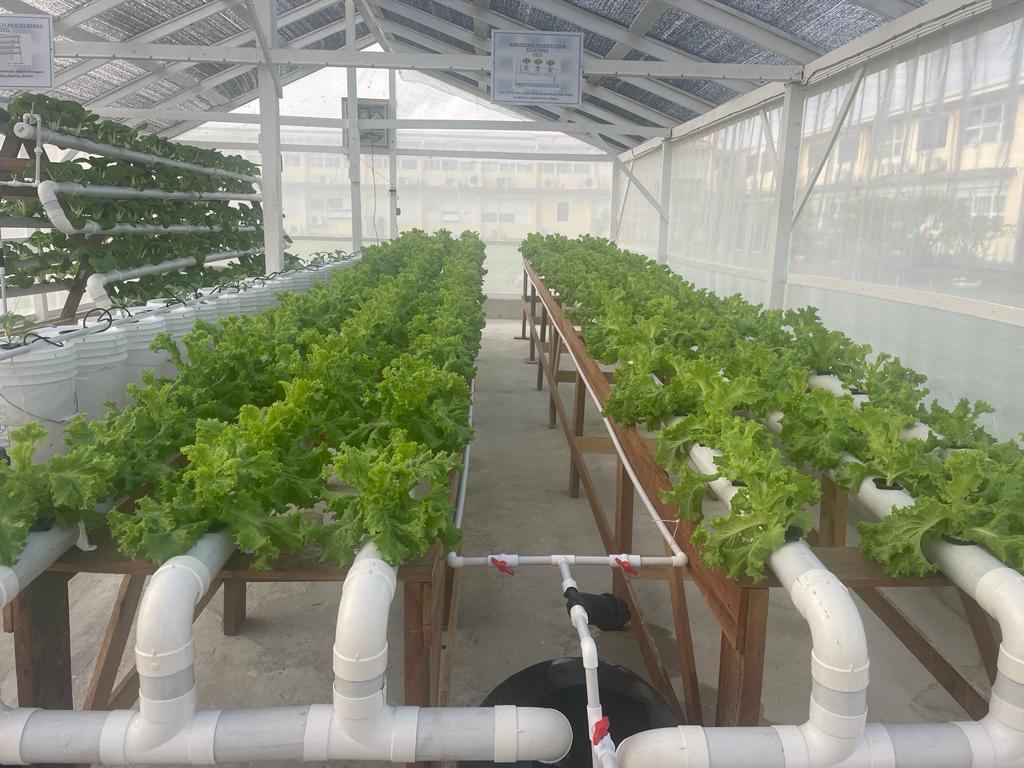Hydroponics
Hydroponics presents a range of significant benefits for agriculture in Guyana. This soilless cultivation method offers increased crop yields and the efficient use of limited arable land. With precise control over nutrient solutions, hydroponics enhances water and nutrient efficiency, especially in regions facing water scarcity. Additionally, by eliminating the need for soil, hydroponics minimizes soil erosion and nutrient leaching, thus, reducing the environmental impact associated with conventional agriculture.

Hydroponics promotes the year-round production of crops, which serves as a solution to seasonal limitations and contributes to food security. This farming technique can empower local communities by fostering sustainable farming practices, boosting economic development, and creating a more resilient and productive agricultural sector in Guyana. The hydroponics shade house at NAREI currently has five hydroponics systems. These systems are the vertical nutrient film technique (NFT), horizontal nutrient film technique, deep water culture (DWC), deep flow technique (DFT), and Dutch Bucket. This shade house serves as a research and learning facility to build and build the capacity of staff, farmers, students, and institutions. Contextual knowledge is provided via tour operations that highlight the design, operation, and suitability of the hydroponics farming technique.
Additionally, NAREI participates in exhibitions, science fairs, and workshops to encourage the appreciation and adoption of hydroponic farming. Crops evaluated across the five hydroponics systems include lettuce, pak choy, kale, cauliflower, and celery. These crops show pronounced adaptability since there were five reductions in the duration of cropping cycles by forty percent (40%) and a yield increase by at least twenty-five reductions in the duration of cropping cycles by forty percent (40%) and a yield increase by at least twenty-five percent (25%).

